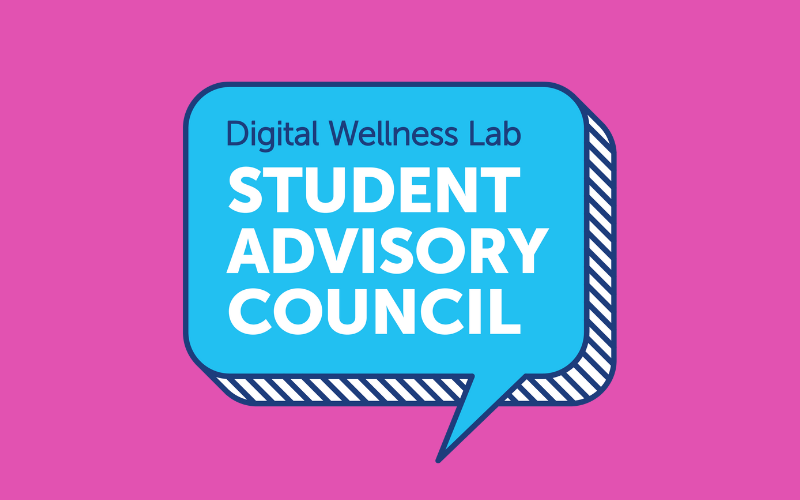Cell phone policies in schools have become a hot-button issue across the country. As more states and districts implement restrictions on cell phones—from Florida’s statewide policy requiring phones to be away during class time to Massachusetts’ proposed “bell-to-bell” policy—parents, educators, and policymakers are debating the best approach to managing technology in schools.
While debates about these policies have included the voices and opinions of many adult stakeholders, the perspectives of students—who are most affected—are often underrepresented in policy discussions and decision-making.
To address this gap, our recent Pulse Survey collected insights from over 1,500 teens (ages 13-18) across the United States to understand how they experience different school phone policies, what they see as helpful, and where they face challenges.
The full report from our survey is available here; this blog post focuses on sharing some recommendations on actionable steps that educators, parents, and other caregivers can take to support teens in developing healthy online habits and navigating the evolving landscape of school phone policies (as suggested by the implications of the survey results).
What Teens Told Us
Students see phones in school as a distraction and many are setting their own limits
63%
said they use their phones “a little too much” or “way too much”
56%
said phones are a moderate to major distraction at school
47%
reported using tools or apps to manage phone use
Teens are aware that phones can be both helpful and disruptive, especially in learning environments. In our survey, nearly two-thirds (63%) of students said they use their phones more than they’d like to, and more than half (56%) acknowledged that phones are a moderate to major distraction at school.
Many students are taking steps to manage their own habits. Nearly half (47%) reported using tools such as screen time limits, focus modes, or do not disturb settings to help regulate their phone use. Girls were especially likely to use these tools, with 51% reporting self-management strategies compared to 41% of boys.
These findings suggest that students aren’t simply waiting for adults to enforce limits—they’re recognizing challenges and trying to build healthier digital habits themselves. Schools and families can build on this existing self-awareness by providing guidance and fostering skills that help students balance their tech use both in and out of the classroom.
Policies have varied effects on the school environment
45%
said their school’s phone policy improved the learning environment
29%
report that their school’s cell phone policy worsens their sense of safety
49%
of students who feel punishments are fair say the policies improve their relationships with teachers
School phone policies are influencing the school environment in multiple ways—some positive, some concerning.
Learning: Students were largely divided on whether their school’s phone policy improved the academic environment. Nearly half (45%) said the policy had a positive impact on the overall learning environment, and just over one-third (35%) reported that it helped them pay better attention in class. However, these results suggest that policies do not guarantee academic improvement for all students.
Safety: Phone restrictions may carry unintended consequences when it comes to students’ sense of safety. Almost one-third (29%) of students said that their school’s phone policy actually worsened their feelings of safety. This concern was particularly pronounced among certain groups: 36% of girls and 45% of transgender or nonbinary students reported feeling less safe under stricter phone rules.
School Culture: Students’ perceptions of fairness around phone policy discipline were strongly linked to how they viewed the impact on student-teacher relationships. When students felt the consequences for phone violations were fair, they were more likely to say the policy improved relationships with teachers. Conversely, when students perceived the punishments as unfair, they felt the policy harmed student-teacher relationships.
Students want a voice in the process
36%
said having input on their school’s phone policy was “very” or “completely” important
58%
reported having students had little to no role in shaping their school’s phone policy
65%
of participants from schools where students were “completely” involved in the design said their school’s policy was very or completely reasonable
Students’ level of involvement in shaping school phone policies made a clear difference in how reasonable they perceived those policies to be. While more than a third (36%) of students said that having input was very or completely important to them, a majority (58%) reported having little to no involvement in developing their school’s rules.
This lack of input was associated with more negative perceptions: among students who had no involvement, a fifth (20%) said their school’s policy was not at all reasonable. By contrast, when students were fully involved in the policy development process, a majority (65%) rated their school’s rules as very or completely reasonable.
These findings reinforce the value of including students in policy decisions—not just to hear their perspectives, but to build understanding, fairness, and stronger buy-in.
Recommendations for Parents, Educators, and Other Caregivers
Drawing on our findings, clinical expertise, and existing research, we offer the following recommendations for parents, educators, and other caregivers to help young people navigate the complexities of school cell phone policies while supporting their digital wellbeing and fostering healthy phone habits.
Parents and Other Caregivers
Start a conversation about school phone policies. Ask your child how their school’s phone rules affect their daily experience, including their learning, focus, and social interactions. Listening openly shows that you value their perspective on policies that impact them directly.
Watch for signs that the policy affects their sense of safety. Our research found that many teens—especially girls and non-binary students—reported feeling less safe with strict phone restrictions. Having open conversations about safety concerns can help you advocate more effectively if needed.
Notice after-school phone habits. Many teens (41%) said they used their phones more intensely after school when they were restricted during the day. Helping your child recognize this pattern can lead to healthier, more balanced device use.
Work together to build healthy boundaries. Collaborate with your child to set digital habits that balance structure with growing independence. Self-regulation is a learned skill that thrives with practice, trust, and modeling healthy tech use at home. (For more on this, see our 5 M’s of Digital Wellness.)
Educators / School Policymakers
Clearly define and communicate policy goals. State the policy’s main aim, e.g. to reduce distraction, boost academic outcomes, and/or foster social connection. Clarity helps teachers, students, and families align around the purpose behind the rules.
Involve students early in policy development. Use surveys, focus groups, and/or student councils to give a diverse range of students a voice in shaping phone rules. Our research found that when students aren’t consulted (as was the case for 38% of teens surveyed), they are significantly less likely to support or follow the rules.
Consider balanced approaches over strict bans. Middle-ground policies like “off and away during instructional time” can offer similar academic benefits to stricter “bell-to-bell” bans, but with fewer unintended consequences around safety, autonomy, and connection.
Pair policies with digital wellbeing education. Only 41% of students reported receiving education on managing their personal screen time, despite 62% receiving broader digital literacy instruction. Schools have an opportunity to explicitly teach healthy device habits and self-regulation skills.
Rethink punitive discipline for phone violations. More than half of schools surveyed used detention or suspension for phone rule violations. These approaches risk undermining instructional time—the very thing policies aim to protect. Consider restorative or reflective strategies that teach accountability without removing students from learning.
Effective Policies Start With Students
Our research suggests that the most effective approaches likely lie somewhere between unrestricted access and complete prohibition. Phone-free classrooms during instructional time may benefit learning, but students also need opportunities to develop healthy habits through practice, and some need their phones for legitimate safety and accessibility reasons.
Instead of treating phone management as solely a rule enforcement issue, we can approach it as a skill-building opportunity. By involving students in the conversation, acknowledging their legitimate concerns, and teaching intentional technology use, we can help them develop habits that will serve them well beyond the school day.
At the end of the day, our ultimate goal isn’t just phone-free classrooms, it’s raising digitally literate young people who can navigate technology with intention, balance, and purpose.








